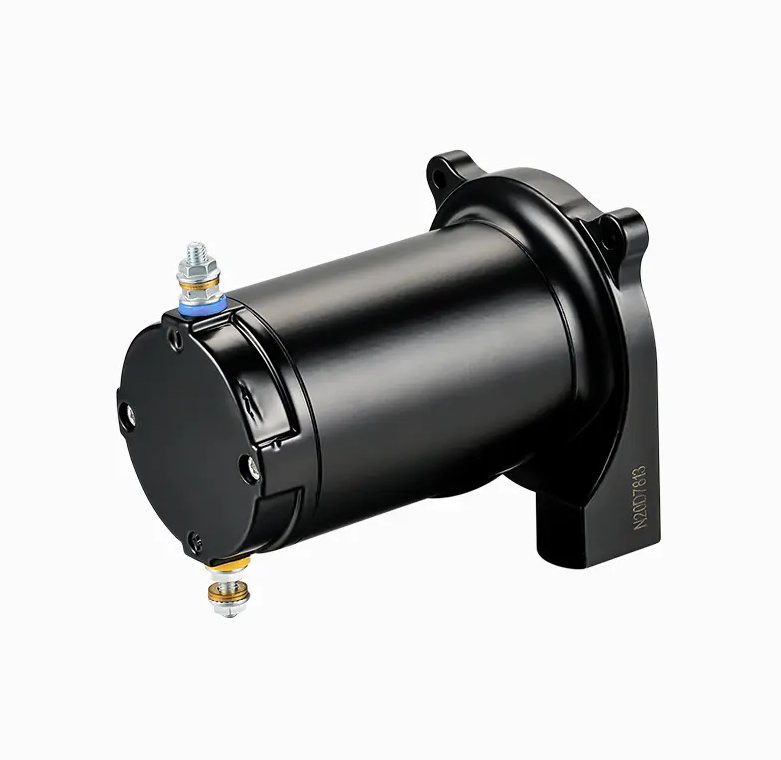A motor is a device that converts electrical energy into mechanical motion, and among the various motor types, the Permanent Magnet DC Motor (PMDC) is widely used due to its simplicity, reliability, and compact structure. To understand how it works, we need to explore the basic components and the interaction of magnetic fields and electric currents within the motor.
Basic Structure
This type of motor generally consists of four main parts: the stator, the rotor (or armature), the commutator, and brushes. The stator contains permanent magnets that generate a constant magnetic field. The rotor, located inside this magnetic field, includes windings through which current is supplied. The commutator and brushes work together to control the direction of current flow within the rotating armature.
Working Principle
When a direct current is applied to the motor, it flows through the armature windings. According to Lorentz’s force law, a current-carrying conductor placed in a magnetic field experiences a mechanical force. In this motor, the armature windings interact with the magnetic field generated by the permanent magnets. This interaction creates a torque that causes the rotor to turn.
The commutator plays a crucial role in this operation. As the rotor spins, the commutator ensures that the current in the armature windings reverses direction at just the right time. This keeps the torque in a consistent direction, allowing the motor to rotate continuously rather than oscillate back and forth.
Magnetic Field as the Driving Force
What sets this motor apart is the use of permanent magnets instead of field windings. These magnets provide a constant magnetic field, which reduces electrical complexity and eliminates the need for external excitation. This design also results in higher efficiency, especially in smaller-scale applications like household appliances, power tools, and automotive systems.
Direction and Speed Control
Reversing the polarity of the voltage supply can reverse the motor’s rotation direction. Additionally, by adjusting the input voltage, the motor's speed can be controlled. Lower voltages result in slower operation, while higher voltages increase the rotational speed, making it highly responsive and flexible for different applications.
Advantages of the Working Mechanism
The operational simplicity of this motor offers multiple advantages:
Quick response time due to direct current control
Efficient energy conversion without field coil losses
Compact design suitable for limited space installations
Lower maintenance needs, since there are fewer parts to wear down
Limitations to Consider
While the design is efficient, the use of brushes and commutators can result in wear and eventual degradation over time. This also generates electrical noise. For applications requiring extremely high performance and durability, brushless alternatives may be preferred.
Product Performance:
1. Rated Voltage: The motor operates on a 24V DC power supply, making it ideal for applications that require a lower voltage input.
2. Power Output: With a power rating of 500W, this motor delivers a substantial amount of power, ensuring efficient operation in demanding applications.
3. Speed Range: The motor offers a wide speed range, allowing for flexibility in speed adjustment as per the specific application requirements.
4. Torque: The motor provides high torque, enabling it to handle heavy loads and maintain stable performance even in challenging conditions.
5. Noise and Vibration: The motor is designed to operate with minimal noise and vibration, ensuring a smooth and quiet operation.
